« Prev Next »

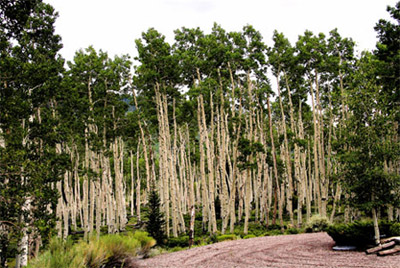
Why should we be concerned about this loss of biodiversity? The answer lies in the fact that, for the first time in Earth’s history, a single species, Homo sapiens, could cause a mass extinction, precipitating its own demise. The primary cause of today’s loss of biodiversity is habitat alteration caused by human activities.
Let’s think about the meaning of biodiversity. Most people understand that biodiversity includes the great heterogeneous assemblage of living organisms. This aspect of biodiversity is also known as "species diversity." Biodiversity includes two other components as well- genetic diversity and ecosystem diversity.
Species diversity
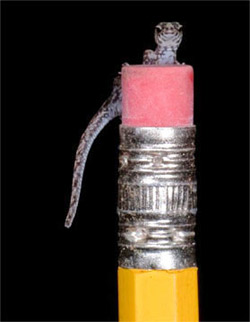
While people are generally most familiar with multicellular organisms such as plants and animals, these organisms form only small branches on the tree of life. The greatest metabolic diversity is found among the prokaryotic organisms of the Eubacteria and Archaea. Although some of these microbes use oxygen for respiration, or photosynthesize like plants, others have the extraordinary ability to derive energy from inorganic chemicals such as hydrogen sulfide or ammonia, and they use carbon dioxide as their only source of carbon for producing organic molecules. Organisms that we consider extremophiles can survive in saturated salt concentrations (36% compared to approximately 3% for seawater), or in superheated water in deep-sea vents and geysers.
Because people have ventured to all parts of the globe, one might expect that the new species being discovered each year would be microscopic organisms that can only be distinguished at the metabolic level. While it is true that most new species identified are insects, microbes and fungi, we are still discovering new vertebrates (Figure 2), even sizable new vertebrates such as a new species of baleen whale and a clouded leopard. Since 2000, 53 new species of primates have been described (IUCN 2008) including a new species of Brazilian monkey, Mura’s saddleback tamarin.
Genetic Diversity
Genes are responsible for the traits exhibited by organisms and, as populations of species decrease in size or go extinct, unique genetic variants are lost. Since genes reside within species, why should we consider genetic diversity as a separate category? Because they hold "genetic potential." For example, many of the crops that we grow for food are grown in monocultures of genetically homogeneous individuals. Because all individuals are the same, a disease, insect pest, or environmental change that can kill one individual can extirpate an entire crop. Most of our high-yield varieties show significant reductions in yield within about 5 years, as pests overcome the crops’ natural defenses. Plant breeders look to wild plant relatives and to locally grown landraces to find new genetic varieties. They can then introduce these genes into crops to renew their vigor. However, according to the UN Food and Agriculture Organization, 96% of the 7,098 US apple varieties cultivated prior to 1904, 95% of the US cabbage varieties, and 81% of tomato varieties, are extinct, and the genes that made these varieties unique are gone.
Genetic variation allows species to evolve in response to diseases, predators, parasites, pollution, and climate change. The Red Queen Hypothesis, named for Lewis Carroll’s character who runs continually in order to stay in the same place, states that organisms must continually evolve, or succumb to their predators and parasites that will continue to evolve.
In addition to traditional breeding, advances in genetic engineering have allowed scientists to introduce beneficial genes from one species to another. For example, diabetics used to depend on insulin from human cadavers, or from cows or pigs. Human insulin was expensive, and non-human insulin could cause allergic reactions. Now we can isolate the gene that codes for human insulin, insert it into bacterial cells, and let the bacteria produce large quantities of human insulin. Other notable feats in genetic engineering include the introduction of genes that enhance the nutritive value of food, create crop resistance to insect pests, induce sheep to produce a protein for treating cystic fibrosis disease, and alter bacteria so that they can clean up toxic mine wastes through their metabolic activities. Many other genetic manipulations are currently in development.
Ecosystem Diversity
Ecosystems include all the species, plus all the abiotic factors characteristic of a region. For example, a desert ecosystem has soil, temperature, rainfall patterns, and solar radiation that affect not only what species occur there, but the morphology, behavior, and the interactions among those species (Figure 3). When ecosystems are intact, biological processes are preserved. These processes include nutrient and water cycling, harvesting light through photosynthesis, energy flow through the food web, and patterns of plant succession over time. A conservation focus on preserving ecosystems not only saves large numbers of species (including non-charismatic species that do not receive public support) but also preserves the support systems that maintain life
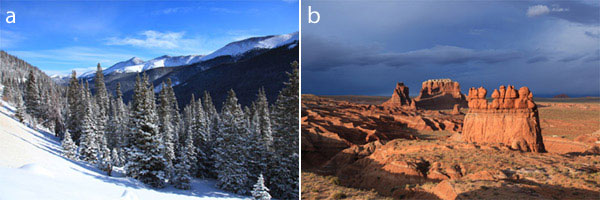
Why Conserve Biodiversity?
From a selfish point of view, humans should be concerned about saving biodiversity because of the benefits it provides us–biological resources and ecosystem services. However, nature provides social and spiritual benefits as well.
Biological Resources
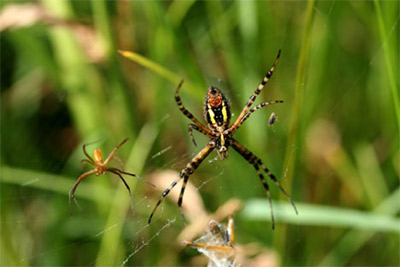
In addition, living organisms provide inspiration for engineers seeking better and more efficient products. The field known as biomimicry is the study of natural products that provide solutions to human needs. For example, shark skin provided the model for hydrodynamic swimming suits. The glue used by Sandcastle worms (Phragmatopoma californica) to cement together their sand particle shells was the inspiration for a glue that mends fractured bones in the aqueous internal environment of the body. Finally, scientists are using the chemical nature of spider’s silk to design strong, lightweight fibers (Figure 4).
Ecosystem Services
Ecosystem services are processes provided by nature that support human life. These services include the decomposition of waste, pollination, water purification, moderation of floods, and renewal of soil fertility. Ecosystem processes are often overlooked, and are not generally valued as part of the economy until they cease to function. When economic value is assigned to these services, it is often startlingly high. For example, insect pollinators help produce many commercially important fruits such as almonds, melons, blueberries, and apples. The global economic value of pollination services performed by insects has been valued at $217 billion per year (Gallai et al. 2009).
How does a process like water purification work? Rain water is filtered by soil and by microbes that can break down nutrients and contaminants, and reduce metal ions, slowing their spread into the environment. Wetland and riparian plants absorb nitrogen, and trap sediments that decrease water quality.
Human construction and development disrupt natural environments, but most habitats have an extraordinary ability to recover when given the chance. This is because dormant seeds in the soil can germinate, stabilize the soil, and initiate successional events that restore vegetation which provides food and structure for other colonizing organisms. Native plants like fireweed can help revegetate an area after fire.
Social and Spiritual Benefits
Throughout most of human history, conservation has involved protecting nature for the spiritual gifts it provides, and protecting sacred places in the local landscape. Stories of indigenous people incorporate detailed knowledge of the animals and plants that make up their world. The heterogeneity of the world’s mythology, folk art, and folk dances show the effects of biodiversity on cultural development, and contribute to the richness of global arts and literature (Figure 5)

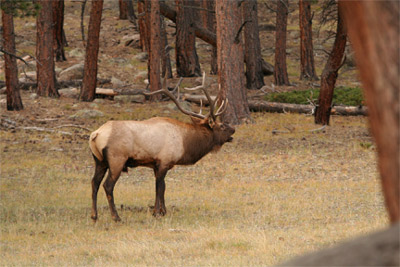
Ecotourism is travel with the desire to view, sustain, and support natural ecosystems and local cultures. Support from ecotourism can reduce habitat destruction, preserve species that suffer from poaching and illegal trade in the pet market, plus provide jobs for the local economy. For example, the Wasini Island Project in Kenya has been a major ecotourism success story. Coral reefs and mangrove forests were suffering degradation from development, agriculture, and from exploitation of reef species. Support from the Biodiversity Conservation Programme made it possible for the local community to build boardwalks and other features that facilitate viewing wildlife. Local people were trained as guides and in administration, and they now run a profitable ecotourism operation. Money from tourism helps the local economy, provides incentive to maintain the habitat, provides funds for the local health clinic, and scholarships for local students (Peopleandplanet.net 2009).
In recognition of the aesthetic value of nature, in 1892 the US Congress set aside the first national park "for the benefit and enjoyment of the people" (NPS 2010). Frederick Law Olmstead, who in the 1800s designed and managed park systems and urban parks such as Central Park in New York City, believed in the rejuvenating powers of nature. He felt that contemplating nature’s grandeur allowed man to put his life into perspective. In modern times, with increasing urbanization, people seek out local parks, open space and trails, and travel to national parks and wild places where they can enjoy nature. Birding, hiking, fishing, hunting, gardening, and other forms of recreation in nature are popular activities, and are economically important.
While modern arguments often focus on the anthropocentric value of biodiversity, nature writers such as Emerson, Thoreau, Leopold, Muir and many others emphasized the intrinsic values of biodiversity. As Henry David Thoreau said, "This curious world which we inhabit is more wonderful than it is convenient; more beautiful than it is useful; it is more to be admired and enjoyed than it is to be used" (1837).
References and Recommended Reading
Biomimicry Institute. Case Studies: Secrets of the sandcastle worm could yield a powerful medical adhesive (2009).
Dirzo, R. & Raven, P.H. Global State of Biodiversity and Loss. Annual Review Environment and Resources 28, 137-167 (2003).
Ellsworth, J.W. & McComb, B.C. Potential effects of passenger pigeon flocks on the structure and composition of presettlement forests of Eastern North America. Conservation Biology 17, 1548-1558 (2003).
Food and Agriculture Organization of the United Nations. The State of the World's Plant Genetic Resources for Food and Agriculture (1997).
Gallai, N., Sales, J. et al. Economic valuation of the vulnerability of world agriculture confronted with pollinator decline. Ecological Economics 68, 810-821 (2009).
Grant, M., Mitton, J. B. et al. Even larger organisms. Nature 360, 216 (1992).
Huber, H., Hohn M.J. et al. . Nature 417, 63-67 (2002).
Hilton-Taylor, C., Pollock, C.M. et al. State of the world's species. In Wildlife in a Changing World: An Analysis of the 2008 IUCN Red List of Threatened Species. eds. Vié, J., Hilton-Taylor, C. et al. Gland: International Union for Conservation of Nature, 2008.
IUCN. Extinction threat growing for mankind's closest relatives (2008).
May, R.M. The dimensions of life on earth. In Nature and Human Society: The Quest for a Sustainable World. ed. Raven, P.H. (Washington: National Academy Press, 2000) 30-45.
National Park Service, Department of the Interior, USA. The National Park System: Caring for the American Legacy (2010).
Peopleandplanet.net. People and ecotourism. (2009)
Raup, D.M. The role of extinction in evolution. Proceedings National Academy Science USA 91, 6758-6763 (1994).
Thoreau, H.D. Henry David Thoreau Quotations, Biography
(1817–1862), Walden, Journal, A Week on the Concord and Merrimack
Rivers, Economy (1837), 2010.
USDA Forest Service. Humongous Fungus: A New Kind Of Individual. Science Daily (2003).
Wilson, E. O. Speciation and Biodiversity. American Instsitute of Biological Sciences (2002).






























